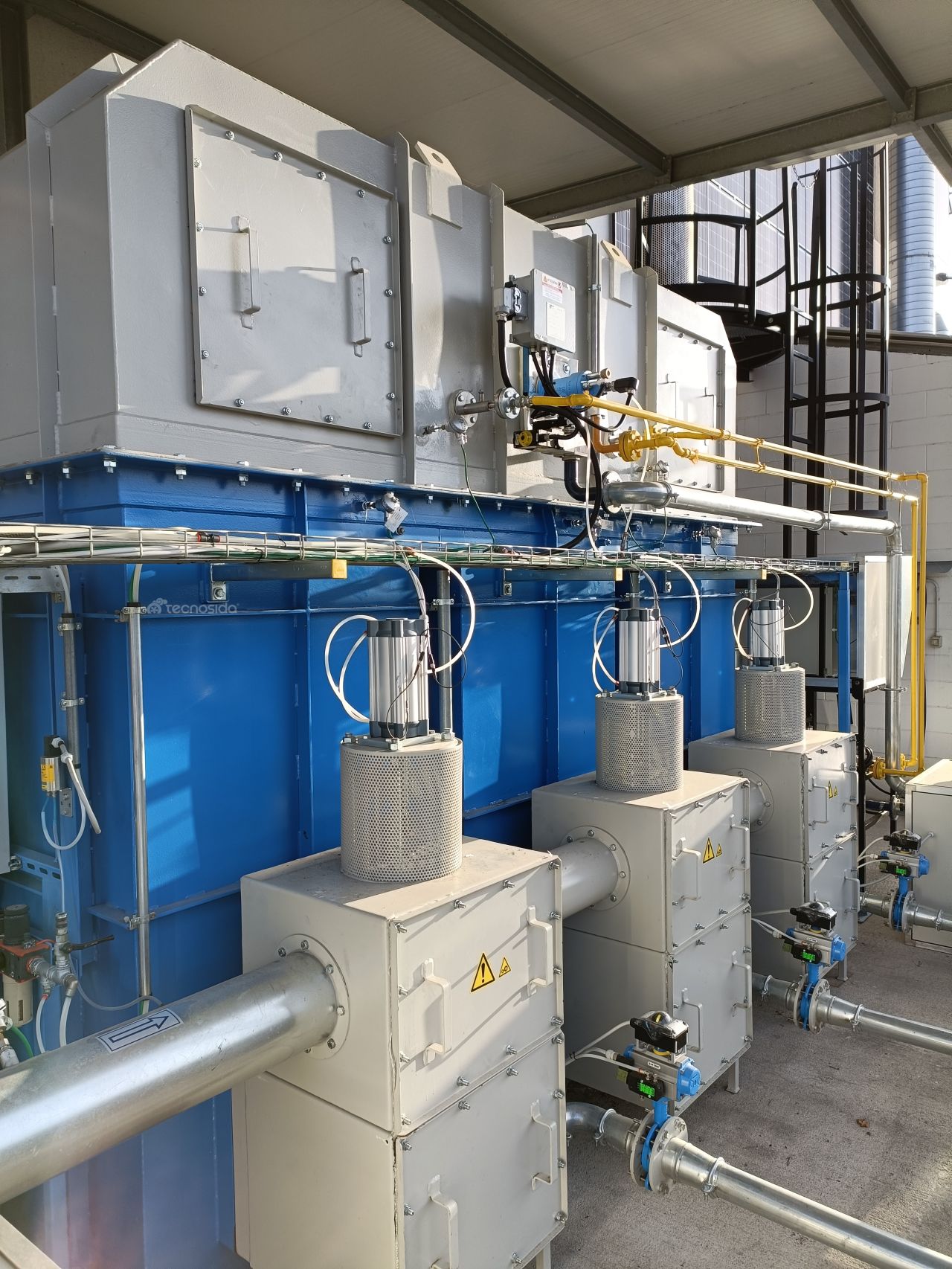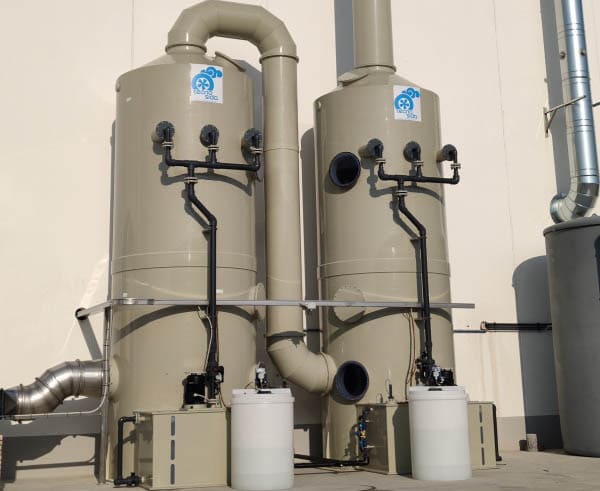Industrial odour elimination: available technologies
How to remove industrial odors
In the article “Odours: What are they? How are they “measured?”, we analysed the odorous molecules and we gave an overview of their chemical nature as well as of the procedures used to measure them and to define their possible effects. But what technologies can be used for industrial odour elimination? To answer this question, it must be underlined that remove industrial odors means reducing it considerably compared to the initial value: “elimination” can be considered an abatement efficiency of 95% or more, while lower values are considered “reduction” and mitigation of odours and their odour nuisance.
In light of the above, we will examine the technologies designed to remove (see section “Industrial odour elimination: available technologies”) and reduce odorous molecules.
Industrial odour elimination: available technologies
There are two main technologies that are considered effective odor eliminators:
- Regenerative thermal oxidizer;
- Wet scrubbers for odour removal
The first technology is a particularly effective odor remover in the presence of VOCs (Volatile Organic Compounds), as it ensures an abatement efficiency of 99% or more. Scrubbers, on the other hand, are very effective in eliminating VICs (Volatile Inorganic Compounds such as NH3 and H2S), but less effective in the presence of VOCs and, in general, of Volatile Organic Substances (VOSs).
The main characteristics of these odour removers will be described in the following sections.
Odor eliminator: regenerative thermal oxidizer

Odorous molecules are part of Volatile Organic Compounds and, as such, they can be eliminated by means of thermal oxidizers. Odour remover consists of a combustion chamber where the pollutants inside the effluent to be treated are burnt at high temperature and transformed into harmless substances (mainly carbon dioxide CO2 and water vapour H2O).
The regenerative thermal oxidizers used as industrial odour removers are designed taking into consideration the following aspects:
- residence time in the combustion chamber;
- combustion temperature;
- valve leakage
The first two aspects are essential to ensure effective odour elimination; they were examined in the dedicated article “The three Ts of combustion”.
As for the valves, it is important to pay particular attention to their construction and level of tightness. In the case of odours, Tecnosida uses special valves with double mechanical and pneumatic seal in order to completely remove leaks.
Industrial odors removers: wet abatement technologies
Wet scrubbers, or washing towers, neutralise pollutants in the air stream by means of an aqueous solution to which acidic, basic and oxidative reagents are added depending on the type of substances to be abated. Generally speaking, it can be said that acidic pollutants are treated with basic solutions (caustic soda), while basic pollutants are treated with acidic solutions (sulphuric acid). In the presence of “reduced” organic compounds, like H2S or hydrogen sulphide, a strong oxidant, such as sodium hypochlorite, is also added to oxidize the molecule.
In order to ensure effective odour elimination, particular attention must be paid to the choice of the following elements while designing the scrubber:
- reagents to be used;
- filling material;
- droplet separator
The choice of the proper combination of reagents is crucial for the chemical reactions necessary for odour elimination to take place. The filling material plays an important role in the sustainability of the investment, and the choice of the droplet separator has a strong impact on odour removal effectiveness. As regards this last aspect, it must be underlined that the water sprayed inside the tower may be partially released outside, as it is “dragged” by the effluent towards the chimney, thus carrying the pollutant molecules previously abated. In order to avoid this unpleasant effect, a droplet separator is required to retain these water droplets inside the tower. Highly efficient demisters also reduce water consumption and have a positive impact on odour performance.

Technologies for industrial odour reduction
After seeing the main odor remover, we would like to show you a quick overview of technologies for the reduction of odorous molecules. These systems are not flexible enough to ensure complete odour elimination, but they reduce it in varying percentages according to the pollutants treated. These technologies include:
- activated carbon purifiers;
- biofilters;
- cold plasma
Let’s examine them together.
Activated carbon purifiers
With this technology, pollutants are adsorbed through special carbons which undergo activation processes to increase their porosity and, as a consequence, their adsorbing power.
Activated carbon purifiers are suitable for abating compounds of organic origin, but are less effective with “light” organic molecules, VOCs with activated groups and Volatile Inorganic Compounds (VICs). In the latter two cases, the adsorbing power can be increased by using specific impregnated activated carbons (in a mix or in series) to effectively abate, if not almost remove, the odour problem.
Biofilters
The operating principle of biofilters is based on the biological degradation of pollutants contained in the air stream. As a matter of fact, this technology uses beds made of organic materials in which bacteria grow. The bacteria metabolize the pollutant molecules, thereby eliminating them from the air stream.
Biofilters can be used to treat a wide range of organic and inorganic compounds, but with a restriction related to the presence of biological flora and fauna within them. The microorganisms may in fact incur poisoning, cooling and heating phenomena which affect the efficiency of the colonies. These “external” conditions can reduce odour removal efficiency, which could otherwise be close to values above 90%.
Cold plasma technology
The cold plasma system is an innovative solution in the treatment of industrial odours: the use of ionised gas enables the oxidation of certain categories of odorous molecules by means of a reduced amount of electrical energy.
The most important limitation of this technology regards the ability of the ionised molecule to “hit and destroy” the odorous molecule. In fact, some odors are made up of very stable molecules which need extremely high levels of energy to be oxidized, destroyed and removed.
Industrial odor eliminators: final remarks
In the light of what has been presented in this article, it can be stated that a lot of technologies are available for the removal of industrial odours, but each of them has specific characteristics which make it more or less suitable for abating the different types of industrial odors.
For this reason, when a industrial odour remover needs to be installed, it is essential to be assisted by experts who are able to assess the initial situation and design the best solution.
For your emissions rely on Tecnosida: we have designed and developed tailor-made odor eliminator since 1979!